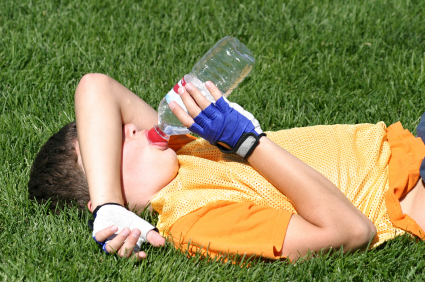 A child's sports hydration status is probably influenced by several factors. While the absence of research makes it difficult to draw any definitive conclusions, several factors affect a child's hydration status during sports, either positively or negatively:
A child's sports hydration status is probably influenced by several factors. While the absence of research makes it difficult to draw any definitive conclusions, several factors affect a child's hydration status during sports, either positively or negatively:
- Beverage type and flavor: If children like the type or flavor of a drink, they drink more. If the child drinks more, it is easier for them to stay hydrated before and during sports,and re-hydrate after a game or practice.
- Accessibility: The more accessible a fluid is to the child, the more likely they are to drink from it. If the child's water bottle is across the field from where their break is occurring, a child may not be willing to go get it. The closer a child's source of fluid is to their practice area and break area, the more likely they are to drink from it. Additionally, the closer the refill area is, the more likely they will be to refill it. If the water bottle runs out and a source to refill it is not readily accessible, the child may leave the bottle empty.
- Container: it is easier for children to drink from containers that they do not share. Examples include paper cups or personal water bottles. Examples of containers a child must share include water fountains and water bottle that the team provides.
- Parents and coaches: Parents and coaches influence a child's hydration behaviors through verbal encouragement and practice modification. Because children won't stop practicing to drink fluids if a formal break is not given because they want to impress and win their coaches' approval, coaches should break regularly during youth sport practices to encourage hydration. By giving regular breaks coaches encourage regular hydration and therefore, hopefully, to avoid dehydration.
Tips for parents: Verbal encouragement to drink fluids before, during, and after practice is important. Remind your child to drink fluids before practice, and then again after practice to replace fluids lost during sports. Ask questions and take other steps to determine your child's hydration status and how much fluid he needs to drink to fully rehydrate. But, says Tami Hew Butler, an Associate Professor of Exercise Science at Oakland University in Rochester, Michigan, "Never force a child to drink when they are not thirsty. This practice has led to fluid overload hyponatremia and death in athletes."
Revised November 14, 2012 Updated July 19, 2017








